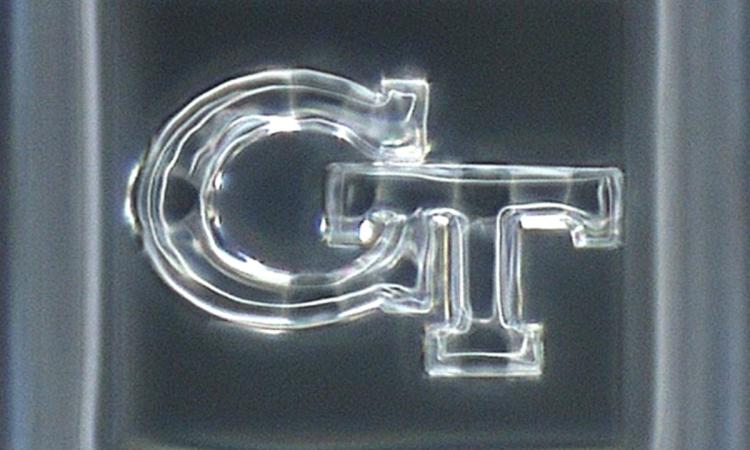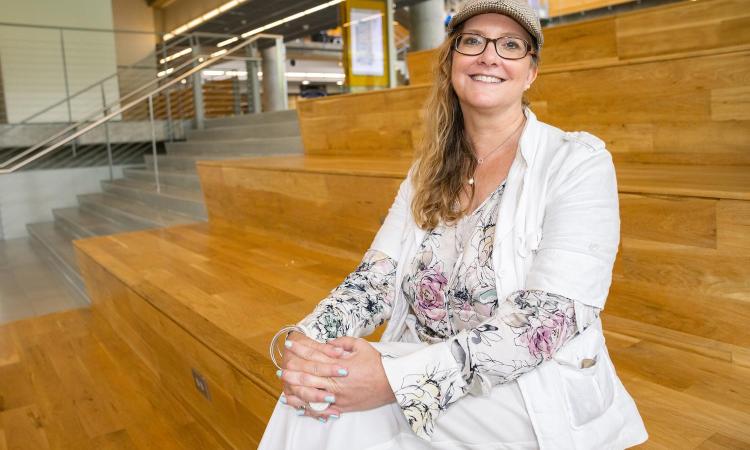ME, MSE researchers lead 3 projects in agency’s new round of advanced materials grants.
Researchers at Georgia Tech will work to develop new controllable materials for 3D printing, electronics made from plastics, and semiconductors that convert infrared light into electrical signals as part of the National Science Foundation’s (NSF) efforts to create advanced materials.
Altogether, the agency is investing $3 million in the three projects led by faculty members in the George W. Woodruff School of Mechanical Engineering (ME) and the School of Materials Science and Engineering (MSE). Georgia Tech is a contributing partner on a fourth project led by Notre Dame researchers to explore materials that can be switched from an insulator to a metal with an external trigger.
The new awards are part of NSF’s Designing Materials to Revolutionize and Engineer our Future (DMREF) program, which is intended to discover and create advanced materials twice as fast and at a fraction of the cost of traditional research methods.
New 3D Printing Materials
Woodruff School Professor H. Jerry Qi is leading a project that will create an advanced active learning model that uses data from molecular dynamics simulations and a limited number of experiments to predict electrical and mechanical properties of polymers.
The goal is to use 3D printing to fabricate functional devices, controlling locally where the material is soft or stiff and conductive or nonconductive. Qi’s group will build on his lab’s recent work that used grayscale digital light processing techniques (g-DLP) and careful resin design to print a material with multiple properties from a single vat of resin. The result could be new kinds of sensors, actuators, or even circuit boards.
“DLP is a 3D printing technique that has industrial applications due to its high speed and high resolution, and g-DLP breaks the barrier of single properties of printed parts. But the materials for g-DLP is very limited,” Qi said. “This research project will greatly broaden the material space for g-DLP, but also expand the property space to include conductivity.”
Qi will work with Rampi Ramprasad and Faisal Alamgir in MSE and researchers at Florida International University.

H. Jerry Qi

Natalie Stingelin
Plastic Electronics
MSE School Chair Natalie Stingelin’s NSF project will use machine learning and artificial intelligence tools to accelerate development of electronic materials based on plastics. The goal is to improve what has been essentially a trial-and-error process to develop such materials, with hopes of designing new kinds of sustainable technologies.
These modern polymer semiconductors could enable new ways of harvesting solar energy, lighting large areas, or building new kinds of sensors and computers. For example, semi-transparent solar cells in greenhouses could allow for sustainable, zero-energy agriculture or for smart, controllable heat management when used in cars and buildings. Or perhaps next-generation sensors could be integrated into tattoos.
“These technologies have been improving over the past decades, aided by advancements in materials chemistry and processing innovations. However, classical descriptions to understand their functions are outdated and cannot be applied to these new ‘green’ plastics. Our project aims to change this,” Stingelin said. “Using machine learning to build a knowledge base that can predict the materials assembly and their properties will lead to a step change in how we use — and manufacture — these types of semiconductors.”
Stingelin’s team includes co-principal investigator and MSE Professor Seung Soon Jang.
(text and background only visible when logged in)
Infrared Light to Electric Signals
Associate Professor Jason Azoulay in MSE and the School of Chemistry and Biochemistry is leading an effort to harness an underused part of the electromagnetic spectrum for energy sensing, manufacturing and more. His team, which includes MSE Assistant Professor Emma Hu, will work to create organic polymers that can efficiently convert infrared radiation into electrical signals and develop the materials into functional devices.
Current semiconductors capable of this conversion require complex manufacturing and their production is expensive. They also are incompatible with silicon-based electronics.
Azoulay’s project aims to create materials and devices that would greatly expand the use and capabilities of infrared semiconductors, with potential applications in manufacturing, energy, healthcare, aerospace and defense, and other areas. His team includes researchers at City University of New York; the University of California, San Diego; the University of California, Riverside; the Air Force Research Laboratory; and Brilliant Matters, Inc.

Jason Azoulay
Related Content

New Process 3D Prints Glass Microstructures at Low Temperature with Fast Curing
Research team led by Jerry Qi employs UV light instead of high heat to make glass that can be used for medical devices, microelectronics, and more.

Stingelin Elected to European Academy of Sciences
MSE Chair is recognized for her contributions in the broader areas of polymer physics.